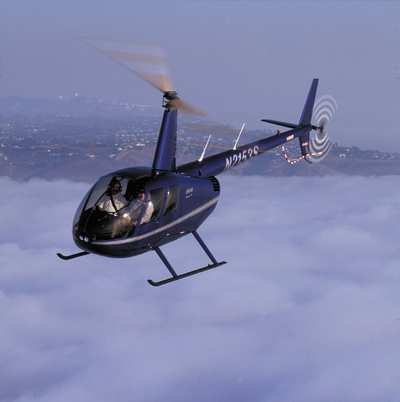Wed, Dec 18, 2013
Helicopter's Tail Rotor Was Struck By A Fueling Mat Left On The Aircraft
The NTSB has issued a probable cause report from an accident involving a Robinson R44 II helicopter that caused substantial damage to the aircraft. The pilot survived the accident, which occurred on February 6 this year.

According to the NTSB's factual report released in September, the pilot of the helicopter executed an autorotation landing after a fueling mat struck the tail rotor at the Tulsa International Airport (KTUL), Tulsa, Oklahoma. The commercial pilot was not injured. The tail rotor blades received substantial damage. The aircraft was registered to and operated by Crumpton Aviation LLC under the provisions of 14 Code of Federal Regulations Part 91 as a business flight. Night visual meteorological conditions prevailed for the flight and no flight plan was filed. The flight was originating at the time of the accident and was destined for Richard Lloyd Jones Jr. Airport (KRVS), Tulsa, Oklahoma.
After fuel servicing by fixed base operator personnel, the pilot lifted off from the ramp area and began a turn to the southwest. Climbing through 150 feet above ground level, the pilot reported a loud bang followed by loss of tail rotor effectiveness. The pilot executed an autorotation landing on a concrete ramp at the airport.
During examination of the accident site, two fractured tail rotor blades and a damaged fueling mat were found on a path between the initial liftoff point of the helicopter and its landing location. Examination of the tail rotor blades indicated that damage was consistent with contact by the fueling mat.
The board said in the probable cause report that after fuel servicing, the line technician did not remove the rubber fueling mat from the fuselage. The pilot did not observe the mat on the fuselage before taking off, most likely due to his inadequate preflight inspection of the helicopter. While climbing through 150 feet above ground level, the fueling mat departed the fuselage and impacted the tail rotor, which resulted in the fracture of both tail rotor blades and a loss of tail rotor control. The pilot executed an autorotation landing and landed without further incident.
The National Transportation Safety Board determines the probable cause(s) of this accident to be the line technician’s failure to remove the refueling mat from the helicopter fuselage following servicing, which resulted in the mat striking the tail rotor in flight, and the pilot’s inadequate preflight inspection.
(R44 image from file. Not accident aircraft)
More News
Aviation Governance Secured...At Least For a While The National Business Aviation Association similarly applauded the passage of the FAA's recent reauthorization, contentedly recou>[...]
Emphasis On Growing The Future of Aviation Through Concentration on 'AFFORDABLE FLYERS' It's been a number of years since the Latest Edition of Jim Campbell's HUGE SportPlane Resou>[...]
Amazilia Aerospace GmbH, Develops Digital Flight Control, Flight Guidance And Vehicle Management Systems Textron eAviation has acquired substantially all the assets of Amazilia Aer>[...]
Honeywell's Primus Brings New Tools and Niceties for Hawker Operators Hawker 4000 business jet operators have a new installation on the table, now that the FAA has granted an STC f>[...]
Company Celebrates Niche-but-Important Advancement in Industry Standards Echodyne has announced full integration of its proprietary 'EchoFlight' radar into the e American Aerospace>[...]
 Bolen Gives Congress a Rare Thumbs-Up
Bolen Gives Congress a Rare Thumbs-Up The SportPlane Resource Guide RETURNS!!!!
The SportPlane Resource Guide RETURNS!!!! Buying Sprees Continue: Textron eAviation Takes On Amazilia Aerospace
Buying Sprees Continue: Textron eAviation Takes On Amazilia Aerospace Hawker 4000 Bizjets Gain Nav System, Data Link STC
Hawker 4000 Bizjets Gain Nav System, Data Link STC Echodyne Gets BVLOS Waiver for AiRanger Aircraft
Echodyne Gets BVLOS Waiver for AiRanger Aircraft



